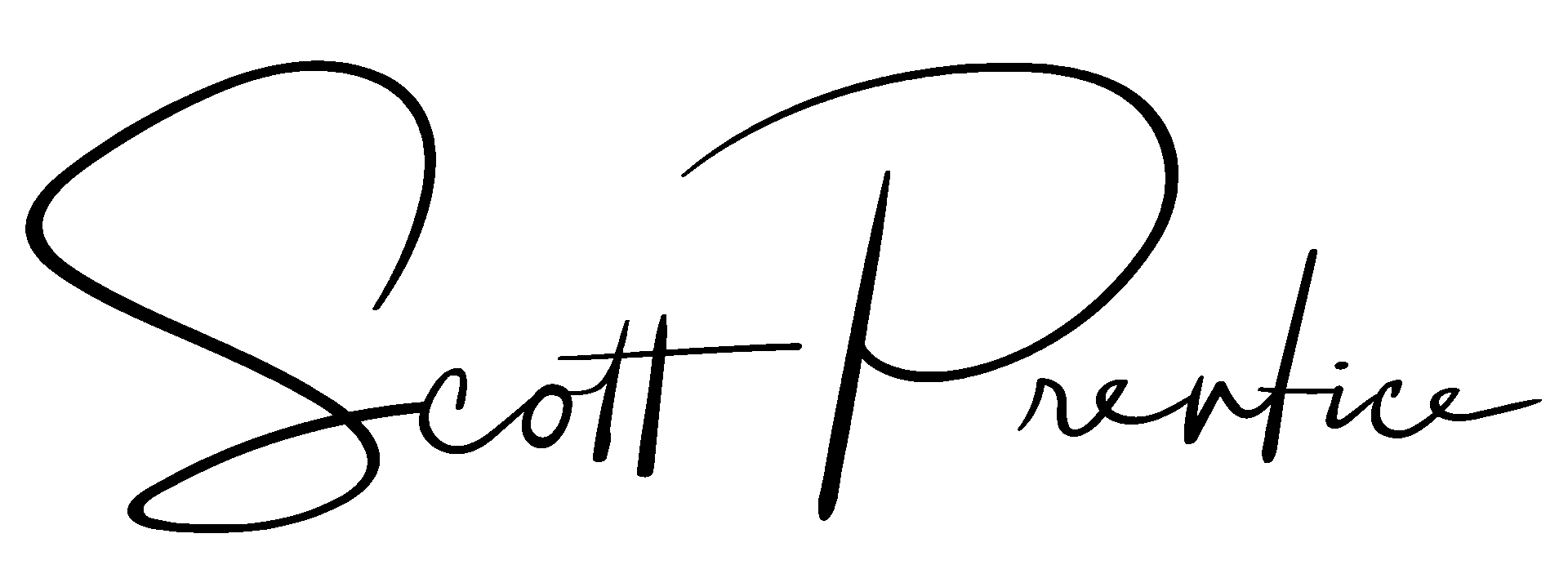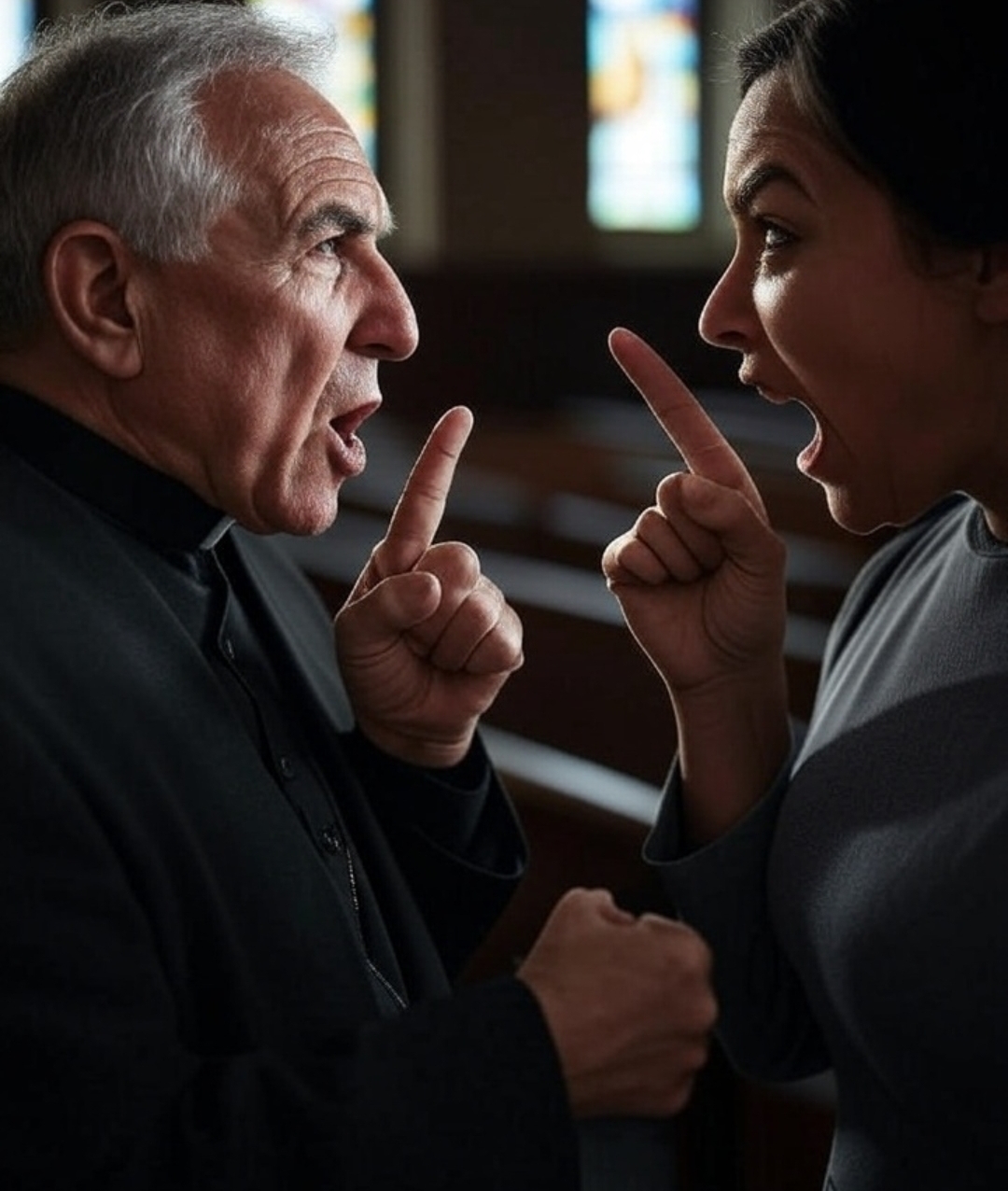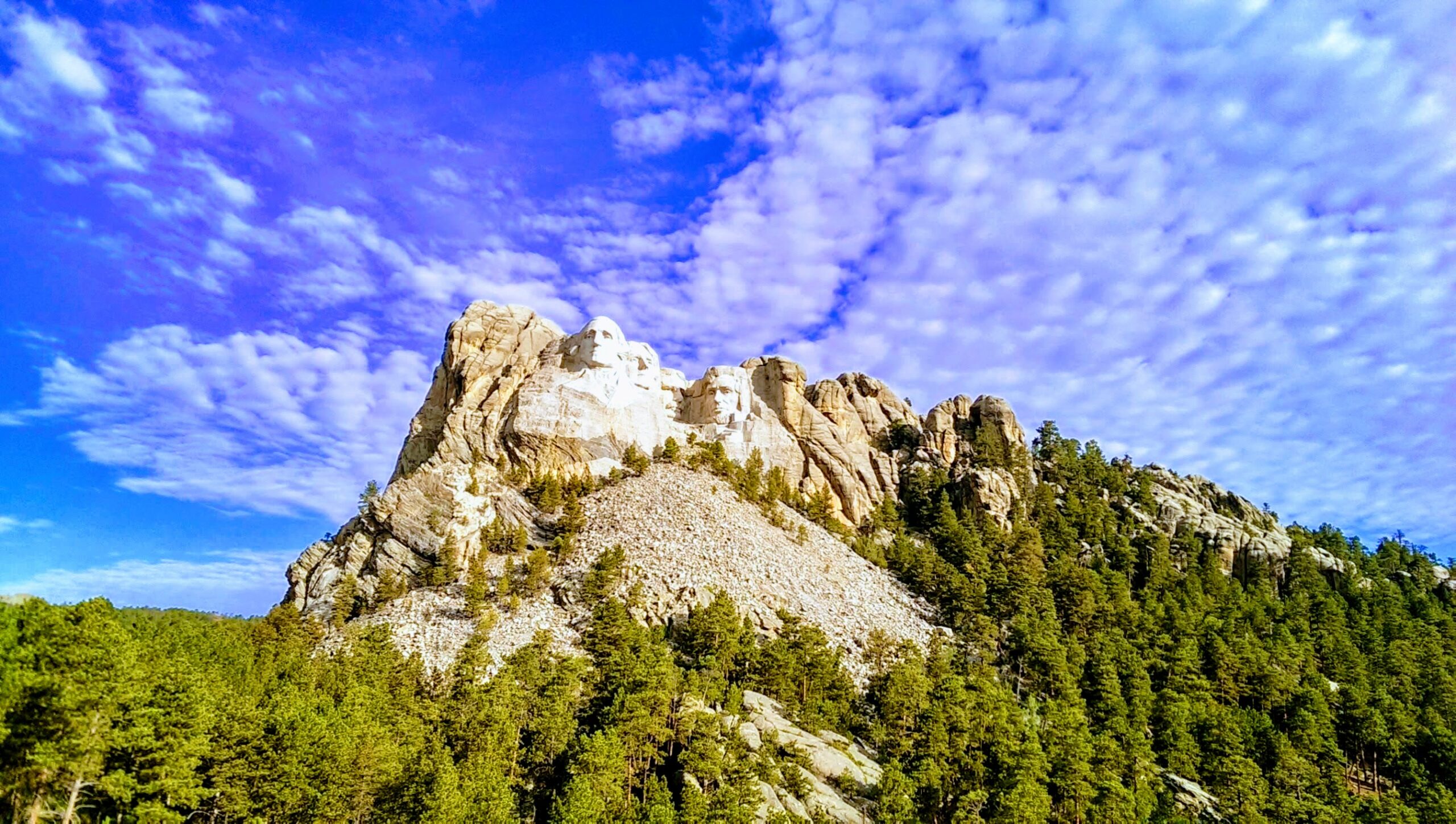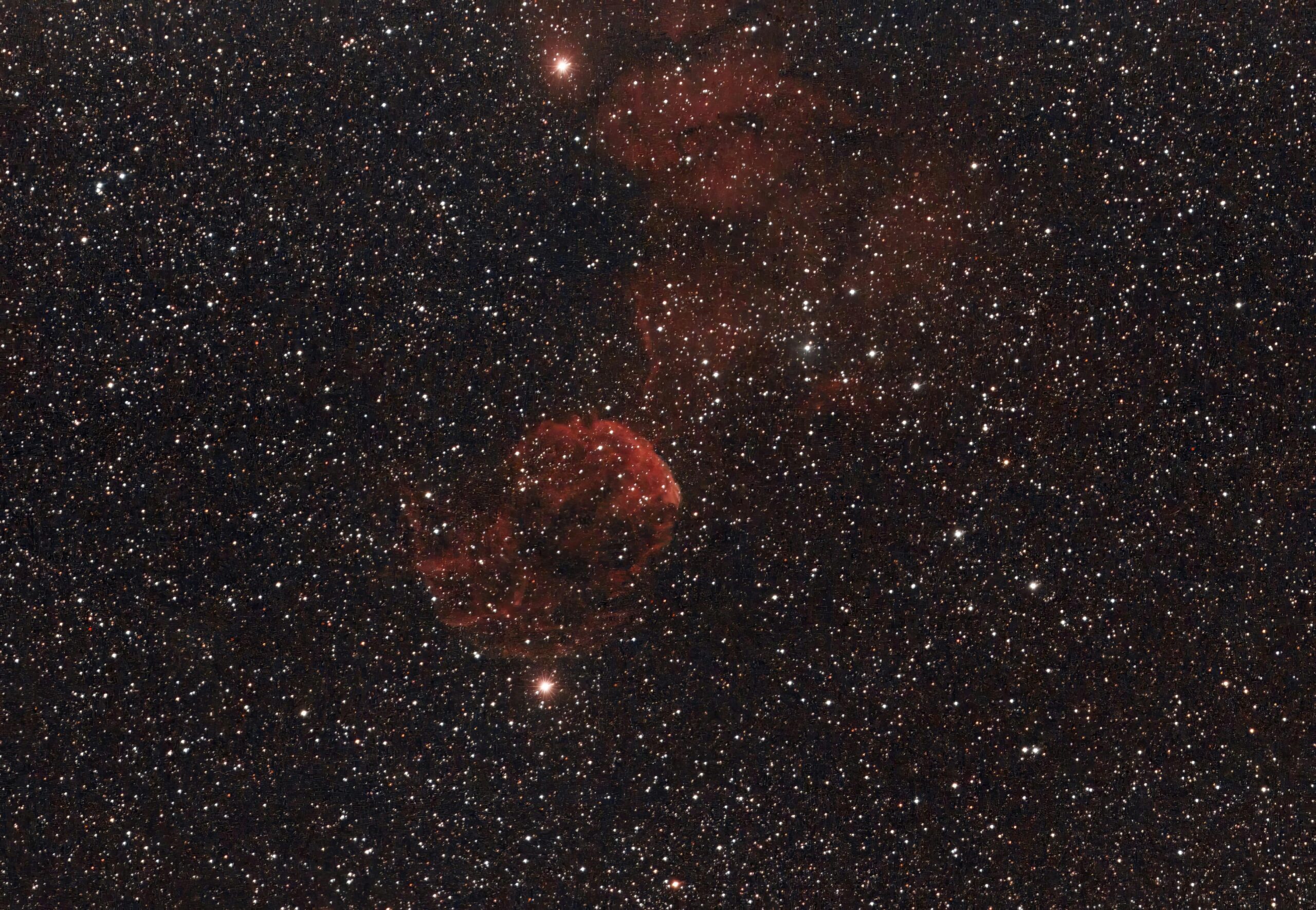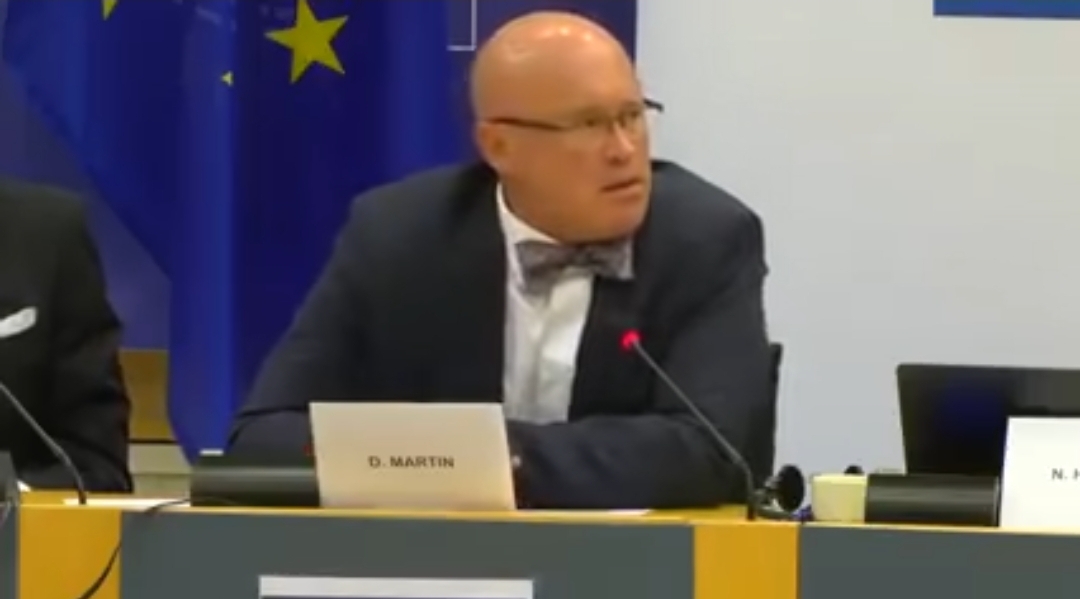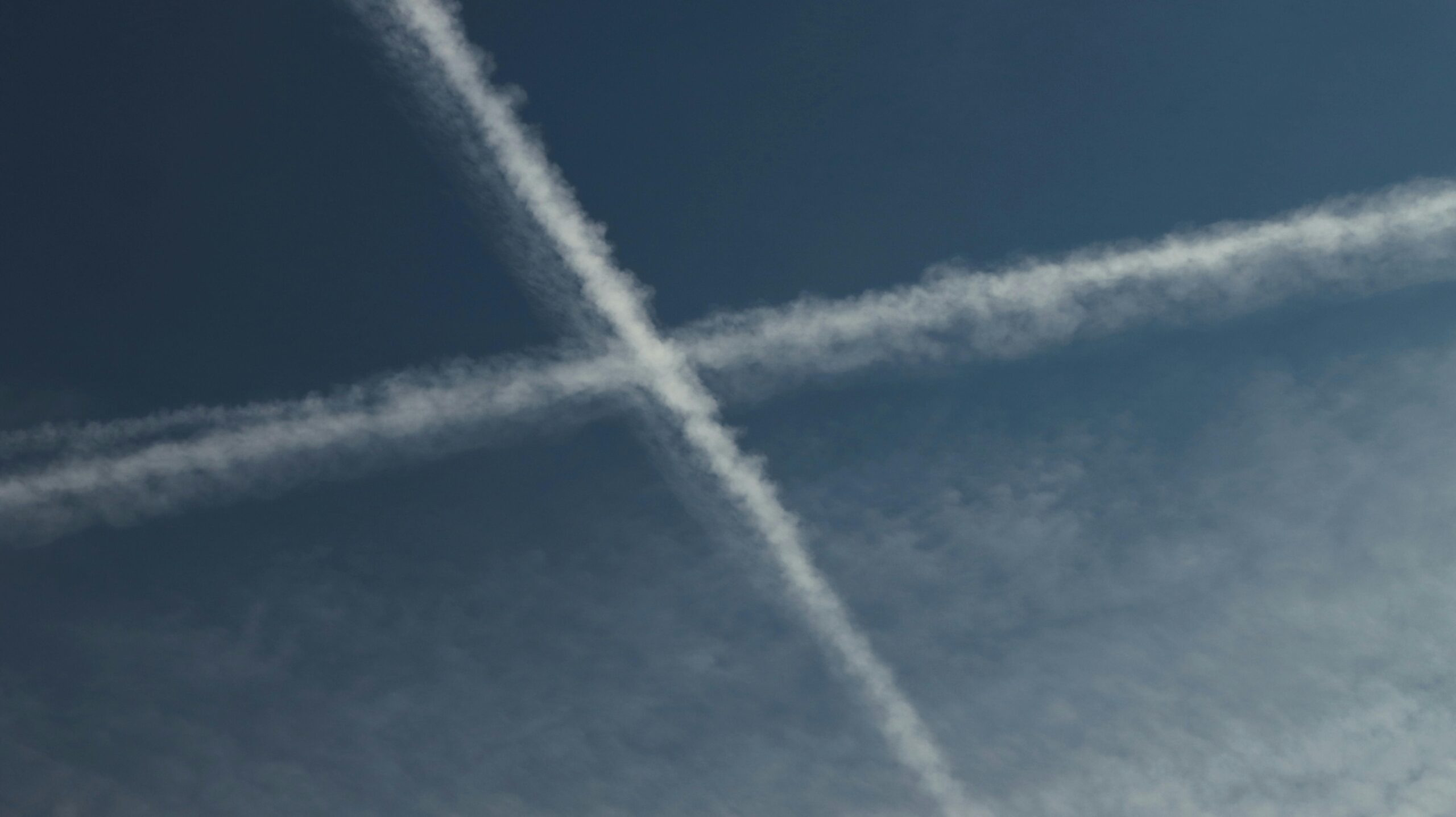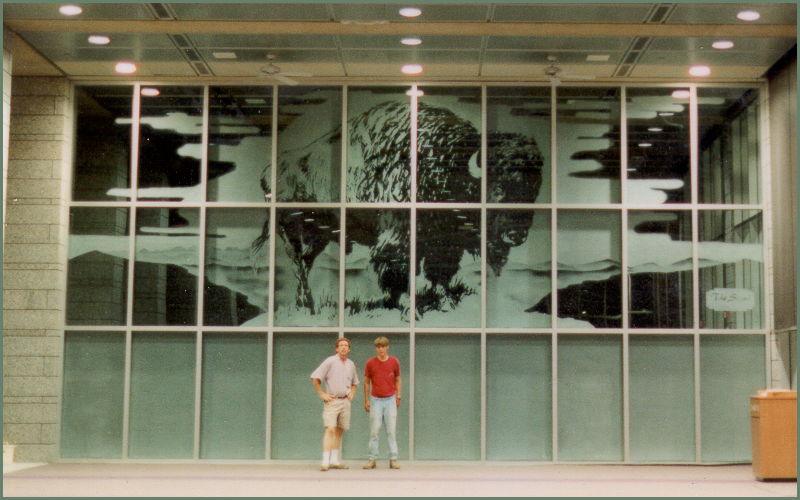Mount Rushmore National Memorial – “The Stand” 2000 Story
1996 Mount Rushmore artist worked with glass, sand, high pressure air and light.
Written by Chris Roman – March 2000
Chances are that even if you’ve been there, you may not have seen it. At the new Visitors’ Center at Mt. Rushmore, between the ice cream bar and the Buffalo Dining Room, sits the largest glass mural in America: a 20-foot-high, 40-foot-wide, white buffalo entitled “The Stand.”
A work of astonishing detail and intricacy, because ‘The Stand” is both translucent and transparent, when all the lights are on it is easy to miss, unless one knows where to look.

‘The Stand” is the creation of Nokomis, Florida artist Scott Prentice. Designed and Crafted in 1996, Scott Prentice explains that his work in what is known as art-carved glass began innocently enough over 28 years ago as he was helping to sandblast some glass. An artist by nature, Prentice refined his skills over the years. As a young man in a rural community, he was generally unaware of the existence of glass etching as an established art form and actually created his own techniques to design his work. It was only later, as he became more and more accomplished, that he learned of supplies made by companies such as 3M that made special blasting friskets. Scott’s work can be seen in multi million dollar homes, businesses around the world, from Applebees to Ramada Inns. One piece was sitting in the Pentagon when the plane hit on 9/11. Scott has been commissioned for work by Miss South Dakota and even the Vice President of the United States.
Prentice is quick to clarify the difference between glass etching and blasting as a craft versus the artistry involved in true art-carved glass. Although glass etching itself is fairly common, as evidenced by the sheer numbers of beer and restaurant signage in existence, Prentice claims that, “There are probably only six or seven other people in the country working at the artistic level that I strive for. I’ve seen a square foot of glass going for $30 and I’ve seen the same size selling for $10,000 or more,” notes Prentice. “Obviously, the difference is in the amount of effort and artistry that goes into a given piece.”
Scott Prentice also says that whereas most works of art are created to stand alone and “stab the viewer” with their presence, art-carved glass is much more subtle. It enhances and alters the total environment. In Prentice’s words, “It creates harmonic balance.” He talks about the Main Street of Deadwood as an example. “Did you ever notice how the glass work on the Midnight Star (which he did not create) somehow transforms the entire area?” he asked.
Explaining the actual process of creating a piece such as ‘The Stand,” Prentice says, “When I’m blasting, I’m thinking in absolute reverse. Where you’re thinking positive I’m thinking negative.” He clarifies that the observer is looking at the front of a piece of glass, looking at the white buffalo. To Prentice, the art work is seen as a negative image and whereas the final image will appear white to the viewer, he envisions it as black. This is accomplished through the use of a frisket. A frisket is a thick piece of rubbery frisket with adhesive on one side which is laid down over the entire piece of glass Prentice will be working on. He then uses freehand to create the art that will be etched in the glass where artistry flows directly from Prentice’s freehand skills.
The Park Service claims that, other than Mt. Rushmore itself, “The Stand” is the second most photographed piece of art in all of South Dakota.
Once the art has been drawn on the frisket, Prentice uses a scalpel to cut along the lines, exposing the glass that is to be blasted. This is why he says that in the final creation, what is transparent to the viewer is originally white to him. Conversely, that which will ultimately appear white to the observer – the art itself – appears as a dark area prior to the blasting. There are so many places where things can go wrong. The frisket itself is a touchy piece of material to put in place. Next the cutting of the frisket offers ample opportunity for error. “Once the frisket has been cut, you can’t put it back,” notes Prentice. Then there is the sandblasting itself. It is performed in an enclosed shed, with Prentice fully clothed in protective gear, including a respirator.
The high pressure spraying of sand onto apiece of glass produces tens of thousands of particulates in the air that can cause both external and internal injury. As if that were not enough to worry about, a full stream of sand (which can be comprised of silica or aluminum oxide or even finely ground garnet) will punch a hole in a three-eighths inch thick pane of glass in about three seconds. To create the 3-D effect that is so intriguing in the glass-carved art, Prentice must actually vary the time the sand is blasting onto the glass, all the time keeping the three-second window in mind. In other words, just a fraction of a second too long and “the piece is toast.”
The Park Service claims that, other than Mt. Rushmore itself, “The Stand” is the second most photographed piece of art in all of South Dakota.
Scott also has four other pieces on display at the facility, which he calls his “Wild Life Series.” These include a mountain lion, an elk, a mountain goat, a big-horned sheep and a coyote.
Recent Articles about “The Stand” :
April 18, 2025 – Nearing 30 Years
Buffalo At Mt. Rushmore – History
